The last week of October often brings the question of, "what to watch on Halloween?", as a lot of people like to spend the night (or some lucky ones the whole day!) watching a scary movie or a horror classic to be "in the mood". That's why it's usual in these days for many sites about cinema to post lists of recommended horror films for the Halloween celebration, and following the tradition, I want to offer a list too. However, this is not going to be the typical list of horror classics, filled with legendary films like Carpenter's "Hallween" or Whale's "Frankenstein" in its ranks. No, W-Cinema's list presents 15 often overlooked classics that, while less known than the usual suspects, are in my opinion as interesting, fun and creepy as the typical Top 10 horror films. Here it is, W-Cinema's Top 15 Overlooked Horror Films for this Halloween!
15. Son of Frankenstein (1939, Rowland V. Lee)
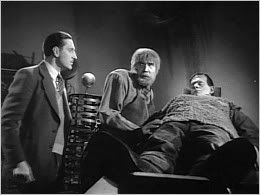
Often overshadowed by the magnitude and fame of both "Frankenstein" (1931) and "Bride of Frankenstein" (1935), Rowland V. Lee's entry in the saga proves that sometimes, in very rare ocassions, a second sequel can be on the level of the first two parts. With beautiful cinematography, expressionist set design, Basil Rathbone as the title character, Karloff as the monster again, and a magnificent Bela Lugosi giving one of his best performances as the sinister Ygor, "Son of Frankenstein" is a real treat for any fan of the Universal classics.
Buy "Son of Frankenstein" (1939) 14. Dust Devil (1992, Richard Stanley)
14. Dust Devil (1992, Richard Stanley)
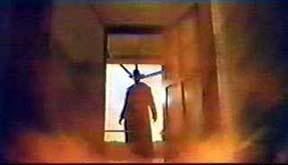
Straight from South Africa, director Richard Stanley presents this tale about a supernatural serial killer who roams the roads of the desert looking for victims as he poses as a hitchhiker. The restored Director's Cut of "Dust Devil" finally shows what Stanley inteded with this visually amazing journey through the desert: a powerful horror tale that it's part western and part slasher, all spiced up with a good dose of South African folk lore. A wildly original and creepy movie.
Buy "Dust Devil" (1992) 13. Körkarlen (1921, Victor Sjöström)
13. Körkarlen (1921, Victor Sjöström)
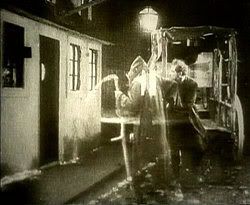
Victor Sjöström is probably better known for playing Dr. Isak Borg in Ingmar Bergman's famous "Smultronstället" ("Wild Strawberries", 1957), but he was also one of the most celebrated directors of the early years of the Swedish film industry. In 1921 he adapted Selma Lagerlöf's novel "Körkarlen" ("The Phantom Carriage"), the tale of a man doomed to drive Death's cart and pick up the souls of the dead because of his extremely sinful life. Less known than other silent horrors, this amazing movie mixes perfectly the supernatural with the melodrama resulting in one of the most beautiful silent films in history.
Buy "Körkarlen" (1921) 12. Cronos (1993, Guillermo del Toro)
12. Cronos (1993, Guillermo del Toro)
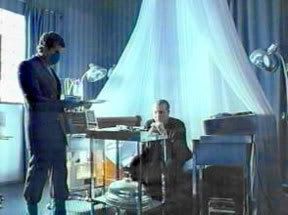
Nowdays, after the enormous success of both "Hellboy" (2004) and "El Laberinto del Fauno" (2006), the name of Mexican director Guillermo Del Toro is now a familiar one when discussing horror and fantasy films, however, his talent was alreay showing since the early days of his career, as his feature length debut, "Cronos", proves. a clever twists on the vampire myth, this film narrates the tale of an old antiquarian who discovers the joy of living thanks to a mysterious artifact.
Buy "Cronos" (1993) 11. Mad Love (1935, Karl Freund)
11. Mad Love (1935, Karl Freund)
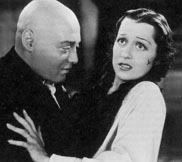
Like Lugosi, Karloff, Price and Lee, Peter Lorre is a name forever asociated with the dark and the bizarre, from his performance in Fritz Lang's "M" to his role as Joel Cairo in "The Maltese Falcon". In Karl Freund's "Mad Love", he is definitely in his element, as a surgeon hopelessly obsessed with an actress married to a famous pianist. When her husband loses his hands in an accident, she asks the doctor to save him, but problems arise when its discovered that the doctor implanted the hands of a killer in his patient.
Buy "Mad Love" (1935) 10. Martin (1977, George A. Romero)
10. Martin (1977, George A. Romero)
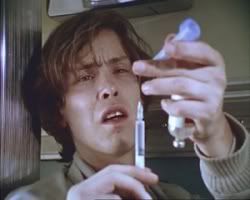
While forever associated with zombies, ghouls and all kinds of living corpses, director George A. Romero has more to offer besides his now classic saga of the living dead, and "Martin" is probably his best movie out of the zombie genre. Like "Cronos", this is another clever twist on the vampire myth, with a young man named Martin claiming to be a vampire and trying to live in the city with his uncle. However, Martin is not like what movies have told us about vampires, as he has no fangs, and sunlight makes him little harm, but his uncle is decided to stop his "condition".
Buy "Martin"(1977) 9. Jacob's Ladder (1990, Adrian Lyne)
9. Jacob's Ladder (1990, Adrian Lyne)
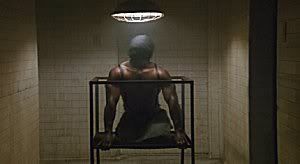
In "Jacob's Ladder" Tim Robbins plays a Vietnam veteran who begins to experience severe hallucinations and is constantly haunted by flashbacks to his past. Sounds like a good idea for a drama, but writer Bruce Joel Rubin and director Adrian Lyne decided to give the story a twist and made one of the best and most frightening horror movies of the 90s. Like a nightmare, "Jacob's Ladder" is filled with disturbing surreal imagery and constant twists that even if one discovers how it ends, the journey is never boring. By the way, this movie was a major inspiration for the "Silent Hill" series of videogames.
Buy "Jacob's Ladder" (1990) 8. Svengali (1931, Archie Mayo)
8. Svengali (1931, Archie Mayo)
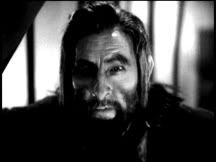
Usually, whenever one talks about horror from the 30s, movies like "Dracula", "Frankenstein" and the rest of Universal Studios' catalogue are the first movies that come to mind, however they weren't by any means the only brilliant horrors done in those years. Based on George du Maurier's novel, "Trilby", "Svengali" features the legendary John Barrymore as the famous musician Svengali, whom using his skills as a hypnotist can do whatever he wants with the mind of the young singer Trilby, except perhaps what he would want the most: to be loved by her. This is a real forgotten classic as good as anything Universal made in their Golden Age.
Buy "Svengali" (1931) 7. Hasta el Viento tiene Miedo (1968, Carlos Enrique Taboada)
7. Hasta el Viento tiene Miedo (1968, Carlos Enrique Taboada)
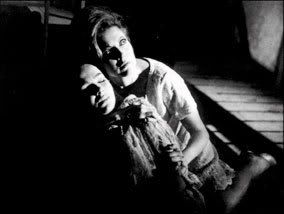
Often praised as the best Mexican horror movie ever made (along with "
El Libro de Piedra" by the same director), this gothic tale of ghosts has been rarely seen out of its native country. Forced to spend their summer vacation at school as a punishment for disobeying orders, a group of teenage girls begin to experience supernatural events apparently related to the dark past of their school. By the way, the movie is shot in color (Taboada was greatly influenced by Italian filmmakers) but sadly I could not find a real image from the film, just this production still.
Buy "Hasta el Viento Tiene Miedo" (1968) 6. The Black Cat (1934, Edgar G. Ulmer)
6. The Black Cat (1934, Edgar G. Ulmer)
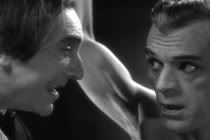
Well, I couldn't help it, I had to include one film from the Golden Age of Universal Studios, however, this movie isn't the typical monster film that the studio used to make in those years, this is the best of what is now known as the "Poe Cycle", a series of films "inspired" by Edgar Allan Poe. In "The Black Cat", a couple in their honeymoon trip through Eastern Europe has an accident and is forced to stay at the house of Hjalmar Poelzig (Karloff), a famous engineer and architect with a somber personality. With them is Poelzig's old friend, Vitus Werdegast (Lugosi), but the meeting of the old friends won't be a nice one.
Buy "The Black Cat" (1934) 5. The Curse of the Werewolf (1961, Terence Fisher)
5. The Curse of the Werewolf (1961, Terence Fisher)
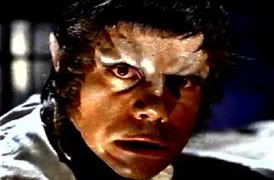
As in the case of Universal Studios, the famous "Dracula" and "Frankenstein" series produced by Hammer Studios in the 60s (with Christopher Lee and Peter Cushing) tend to overshadow most of the other classics that the legendary studio made in its time. 1961's "The Curse of the Werewolf", directed by Terence Fisher and starring Oliver Reed is sadly a prime example of this, and I say sadly as in my opinion this is the finest movie the British studio everproduced, with everything Fisher used for "Dracula" and "Frankenstein" taken to perfection. Personally, I find this movie to be superior to Universal's "The Wolf Man".
Buy "The Curse of the Werewolf" (1961) 4. El Día de la Bestia (1995, Álex De la Iglesia)
4. El Día de la Bestia (1995, Álex De la Iglesia)
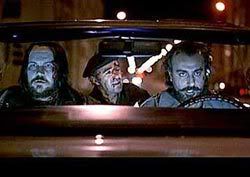
A crazed priest, an exceptic psychic, a joyful rocker and the Antichrist, what else does one need? Spaniard director Álex De la Iglesia conceives a wildly original horror comedy that came to bring new life to Spain's horror scene back in the 90s, and proved that Spain's cinema was more than Almodovar and melodrama. With a very irreverent black humor and great style, this tale of a priest in a desperate hunt for the Antichrist is one movie that must be experienced. Whomever said that horror and comedy don't mix must check this one out.
3. Dead Ringers (1988, David Cronenberg)
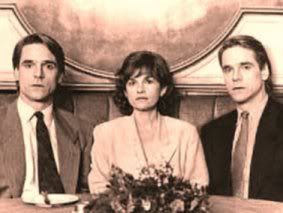
One of the most interesting directors of the modern times, David Cronenberg created some of the most fascinating horror movies during the decade of the 80s. His 1988 movie, "Dead Ringers", is probably the crowning achievement of his horror period (where he also made the masterpieces "Videodrome" and the remake of "The Fly"), as this bizarre tale about the relationship between two identical brothers (both played masterfully by Jeremy Irons) contains the best of his filmmaking style and is the bridge between his young adulthood to his mature career.
Buy "Dead Ringers" (1988) 2. The Body Snatcher (1945, Robert Wise)
2. The Body Snatcher (1945, Robert Wise)
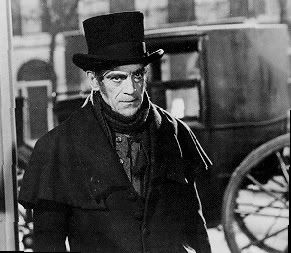
I wouldn't be lying if I said that producer Val Lewton of RKO pictures single-handedly kept the flame of high quality American horror alive during the 40s, as not only the movies produced by him were among the best, he discovered the talents of many remarkable directors such as Jacques Tourneur, Robert Wise and Mark Robson. Tourneur's "Cat People" is often lauded as the best, but while its certainly the most influential, personally I find the overlooked "The Body Snatcher" to be the brightest jewel amongst the movies Lewton produced in the 40s.
Buy "The Val Lewton Horror Collection"
1. Le Locataire (1976, Roman Polanski)
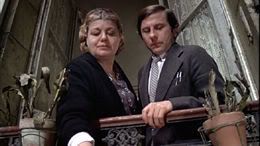
And so we have arrived to the Top spot, Roman Polanski's "Le Locataire", or as it is known in English, "The Tenant"; the surreal tal of man who begins to believe that the other tenants in the building where he lives are conspiring against him and want to kill him just as they did with the previous tenant who occupied his apartment. Part of the so called "Apartment Trilogy" (along "Repulsion" and "Rosemary's Baby"), Polanski plays with paranoia and the surreal in a movie that probably reflects the way he saw life after the death of Sharon Tate and his posterior exile in Europe (he plays the lead role after all). Visually breathtaking, this gothic surreal trip moves slo, but is truly a disturbing and creepy experience.
Buy "Le Locataire" (1976)
-------------------------------
UPDATE 2011: Be sure to check out these 15 overlooked horrors for Halloween as well...























